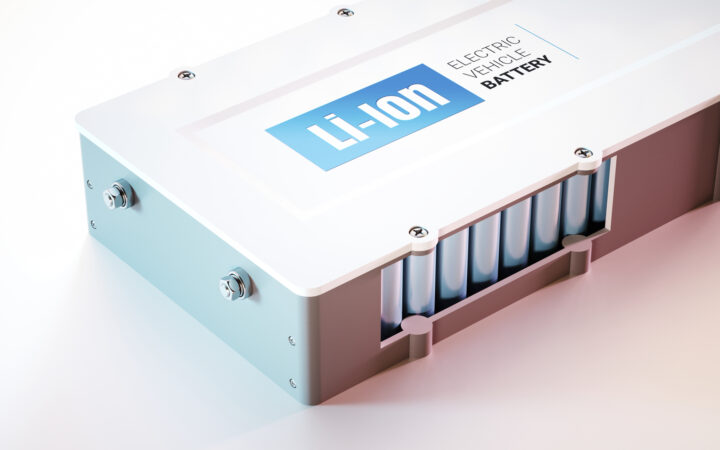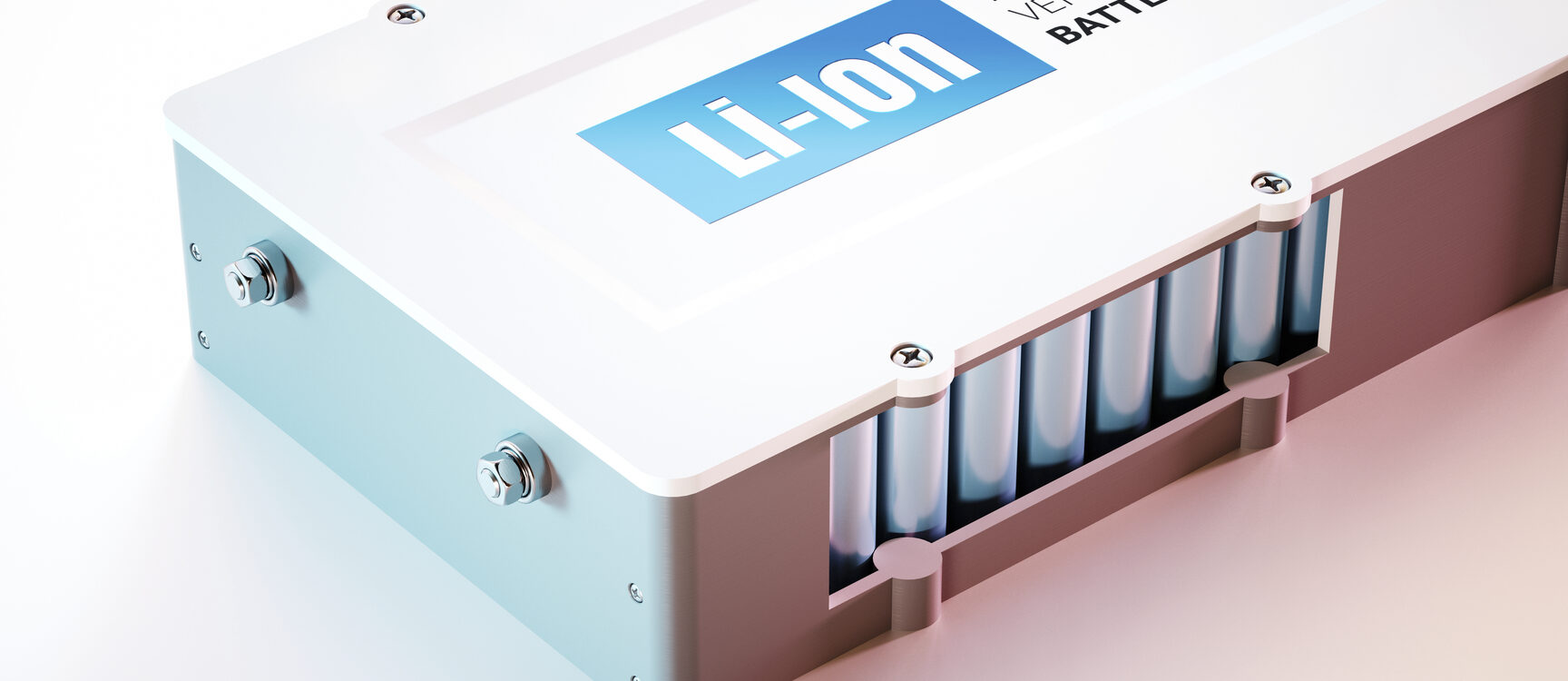Safe, high-performing lithium-ion batteries wanted!
The ease of surfing on your mobile phone, driving your electric car for hundreds of kilometres, or storing solar energy for later use. All of these activities are enabled by battery technologies. Lithium-ion battery (LIB) technology provides high-energy density and low self-discharge batteries for various applications. Currently LIBs are popular in portable electronics, electric vehicles and in military applications. There is a need for batteries that can be charged faster in a safe manner, and that do not experience capacity loss due to charging and discharging them over and over again. Also the unfortunate safety issues, like the fires caused by thermal runaways, must be addressed now. There must not be anything uncertain in the batteries, because they are literally all around us.

Solving Li-ion battery challenges with thin film coatings
The basic operation principle of the LIB is that the positive lithium-ions move in the electrolyte from one electrode to the other at the same time creating a flow of electrons between the current collectors. The anode and cathode are physically separated by a separator to prevent short circuit.
The electrolyte consists of highly reactive chemicals, so various reactions occur between the electrolyte and the electrodes. An important chemical reaction that takes placebetween the electrolyte and the anode is the organic formation of the solid electrolyte interface (SEI) which stabilizes the cycling performance of the cell. However, the SEI also consumes lithium ions permanently, which leads to reduced columbic efficiency. Another performance lowering reaction is the cathode material’s dissolution, when hydrogen fluoride (HF) is generated in the electrolyte. This leads to fast degradation of battery performance.
Coating the electrodes could decelerate or even prevent degradation of the performance. However, if the battery’s electrodes are coated, the requirements for the coating are strict. The coating must be extremely thin and cover the electrode completely without holes. It should also not block the flow of electrons or lithium ions. It should be tough enough, so that the possible volume expansion does not break it. Also in the best case coating doesnot add any weight to the battery cell.
Atomic layer deposition for thin and reliable coating of Li-ion batteries
Luckily atomic layer deposition (ALD) can solve many of the issues the batteries are faced with. ALD coatings are typically metal oxides or nitrides. The films are built from two precursors, which are introduced to the substrate by turns. Each precursor only reacts with the former precursor that is compounded on the substrate surface– the so-called active sites – and all non-reacted precursor gas is pumped away. After that, the next precursor is introduced. This means no unwanted side reactions will occur in the gas phase. The ALD technology is self-terminating. When all active sites are used, the reaction stops. Hence the film is formed an atomic layer at a time. This means that you can stop the film growth simply by no longer pulsing the precursor to the substrate.
ALD has the following benefits:
- Conformality: the film is equally thick all around the substrate’s geometry
- Pinhole-free: no spot of the substrate will go uncoated
- Density: the film is formed by chemical bonding instead of surface diffusion
- Precision: the film thickness can be controlled down to the atomic level
Robust, more stable separator with superior wettability using ALD
ALD coating can bring several improvements to the separator’s performance. First of all it can suppress thermal shrinkage prominently.

This may improve batteries’ safety, and the thin coating layer (e.g. less than 10 nm) does not add to the thickness or the weight of the separator in practice. Aluminium oxide coatings have also been seen to better the wettability of the separator without causing any diminishing in the battery’s electrochemical performance. Basically, with a couple of nanometers thick film you can get several benefits without compromising performance!
ALD to protect Li-ion battery electrodes
ALD thin films can also be easily deposited on to the electrodes with a low temperature process. Common anode material consists of carbon or silicon. If an ALD thin film is deposited on top of the anode, it will serve as an artificial SEI stabilizing the surface. It will also reduce new SEI formation, thus reducing the capacity degradation as well as improving the specific capacity, cycling stability and columbic efficiency. On graphite anodes ALD-Al2O3 has also been seen to more stable in high temperatures compared to the organic SEI, which enhances safety.
The cathode commonly consists of lithium metal oxides. The cathode material’s largest problems are usually related to the fact that the material dissolutes into the reactive electrolyte. The dissolution affects performance negatively. For example, a common cathode material, LiCoO2, has a problem with Co’s dissolution. This happens when over half of the lithium-ions are extracted from the cathode structure in voltages above 4.2 V. If the Co dissolves, the structure of the LiCoO2 is altered and the performance is worsened. The dissolution is especially critical in high contact area cathodes such as nano-LiCoO2. Coating the cathode with sub-nanometer Al2O3 layers has provided for example a 250% improvement in reversible capacity at the voltage range of 3.3-4.5V compared to bare LiCoO2 cathode.
Cathodes including manganese also suffer from the dissolution of Mn into the electrolyte. This results in irreversible loss of Mn. Mn ions also have a habit to migrate and deposit to the anode surface, where they may block lithium ion transfer. Sub-nanometer Al2O3 ALD films may act as a physical barrier between the cathode material and the electrolyte. When 2 cycles of Al2O3 was deposited on NMC cathode, the capacity retention after 100 cycles was up from 65% to 91%.
Beneq has already done development with customers regarding electrode coatings.
Competitive advantage of safer and longer-lasting batteries with ALD roll-to-roll!
ALD should become the new standard in lithium-ion battery production to enhance both safety as well as cycling stability, not to mention to suppress capacity retention. Before, the idea of ALD was not applicable in high volume production, because the products could only be coated in relatively small ALD chambers with long processing times and the expenses were not tolerable.
Now Beneq has changed the game! Beneq’s WCS 600 roll-2-roll equipment can easily and quickly coat electrode or separator sheets up to 600 mm wide. The processing speed with the current equipment has been tested to be 20 meters per minute, but could be potentially increased if needed. The equipment can be integrated in production lines, enabling high-capacity ALD processing. The technology has a considerably lower cost, and the system can be automated providing continuous and efficient processing.
If you want to be a technology leader in safer, high-performing batteries, ALD is the answer!

